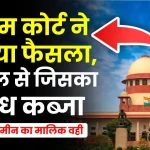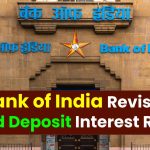
If you’re looking for a safe and guaranteed way to grow your savings, the Post Office Kisan Vikas Patra (KVP) might be just what you need. With this scheme, your money will double in 115 months, and the best part? You can get started with as little as ₹1000.
Backed by the Government of India, this savings instrument is designed for individuals who want assured returns without market risk. It’s ideal for both beginners and professionals who prefer a low-risk, long-term investment strategy.
scheme of Post Office
| Feature | Details |
|---|---|
| Scheme Name | Kisan Vikas Patra (KVP) |
| Minimum Investment | ₹1000 |
| Interest Rate | 7.5% per annum (compounded annually) |
| Maturity Period | 115 months (9 years and 7 months) |
| Investment Type | Fixed, Government-Backed |
| Tax Benefits | No tax deduction under Section 80C; Interest is taxable |
| Premature Withdrawal | Allowed after 2.5 years under specific conditions |
| Official Website | India Post – Savings Schemes |
The Kisan Vikas Patra is a time-tested, government-backed scheme offering predictable and safe returns. If you’re looking to double your money with minimal risk, this is a great option to consider. While it may not offer tax perks, its simplicity, accessibility, and guaranteed growth make it a favorite among conservative investors.
Before investing, always assess your financial goals and compare with other instruments. But if your priority is safety, stability, and steady returns, KVP is worth your attention.
What is Kisan Vikas Patra (KVP)?
Kisan Vikas Patra is a savings certificate scheme introduced by India Post to encourage long-term investment. It offers guaranteed returns at a fixed interest rate. The scheme was initially meant for farmers but is now open to all Indian citizens.
The most attractive feature? Your money doubles after 115 months. For example, if you invest ₹100,000 today, you will receive ₹200,000 after 9 years and 7 months.
see also: Post Office Recurring Deposit Rs 800 Every Month Will Create a Huge Fund
How Does KVP Work?
The interest rate is 7.5% per annum, and it compounds annually. That means your investment grows faster than regular savings accounts or FDs with simple interest.
Here’s a practical example:
- Invested Amount: ₹100,000
- Interest Rate: 7.5% p.a.
- Time: 115 months
- Maturity Amount: ₹200,000
You don’t need to track the market or worry about fluctuations. It’s straightforward and stress-free.
Eligibility and Account Types
Anyone who is an Indian citizen above the age of 18 can open a KVP account. There are several types of accounts you can choose from:
- Single Account: For individuals.
- Joint A Account: Two adults can jointly receive maturity amount.
- Joint B Account: Either of the two account holders can receive the maturity amount.
- Minor Account: A guardian can open an account on behalf of a minor or a person of unsound mind.
How to Open a KVP Account?
Opening a KVP account is simple and can be done at any post office or designated bank.
Step-by-step guide:
- Visit a nearby Post Office with required documents.
- Fill the KVP application form (Form-A).
- Submit KYC documents: Aadhaar card, PAN card, or Passport.
- Make the minimum deposit of ₹1000 (or in multiples of ₹100).
- Receive your KVP certificate as proof of investment.
You can also nominate a beneficiary at the time of opening the account.
Is Premature Withdrawal Allowed?
Yes, but only under specific conditions:
- After 2 years and 6 months (30 months) from the date of investment.
- In the event of death of the account holder.
- If ordered by a court of law.
- If forfeited by a Gazetted Officer.
Early withdrawals may not provide full interest benefits, so it’s best to stay invested till maturity.
Tax Implications
This is a key factor investors should consider:
- No tax deduction under Section 80C for KVP investments.
- Interest earned is taxable, and you must declare it while filing ITR.
- However, no TDS is deducted at source, unlike some fixed deposits.
For tax-conscious investors, this may not be the best tool, but for those prioritizing safety and returns, it’s a solid option.
Advantages of KVP
- Guaranteed returns irrespective of market performance.
- Backed by Government of India, making it highly secure.
- Simple process to open an account.
- Long-term financial planning tool.
- Suitable for individuals without access to financial advisors or market knowledge.
Who Should Invest in KVP?
This scheme is ideal for:
- Risk-averse investors who prioritize capital protection.
- Retired individuals looking for safe avenues.
- New investors starting with small amounts.
- Parents or guardians planning for a child’s future.
It is also useful for those living in rural areas, where access to digital or complex financial instruments is limited.
Alternatives to KVP
While KVP is attractive, consider these alternatives:
- Post Office Monthly Income Scheme (POMIS) – Regular monthly income.
- National Savings Certificate (NSC) – Tax benefits under 80C.
- Public Provident Fund (PPF) – 15-year lock-in but tax-free returns.
Each has different features based on your investment goal, so evaluate your options carefully.
see also: Will Senior Citizens Get Home Loans? Know What the Rules Say
Scheme of Post Office FAQs
Q1: Can NRIs invest in Kisan Vikas Patra?
No, only Indian residents are allowed to invest in KVP.
Q2: Is there any lock-in period?
Yes, 2.5 years is the lock-in period before which you cannot withdraw funds.
Q3: Can I get a duplicate KVP certificate?
Yes, in case of loss or damage, a duplicate certificate can be issued upon application.
Q4: Is KVP available online?
Currently, KVP accounts must be opened offline at post offices or designated banks.
Q5: What happens if I forget to claim at maturity?
The amount continues to earn interest for up to 2 additional years, after which it stops earning.











